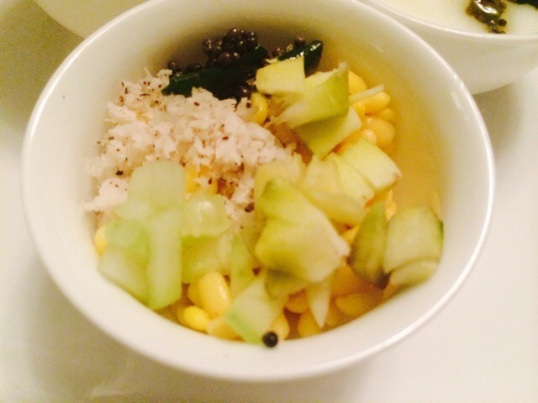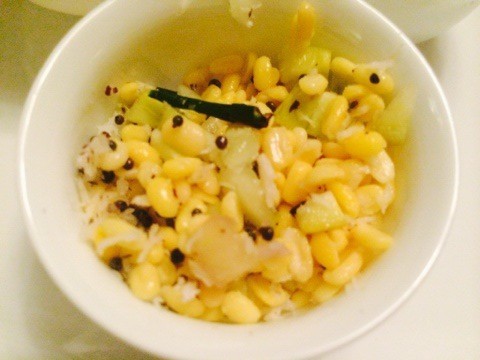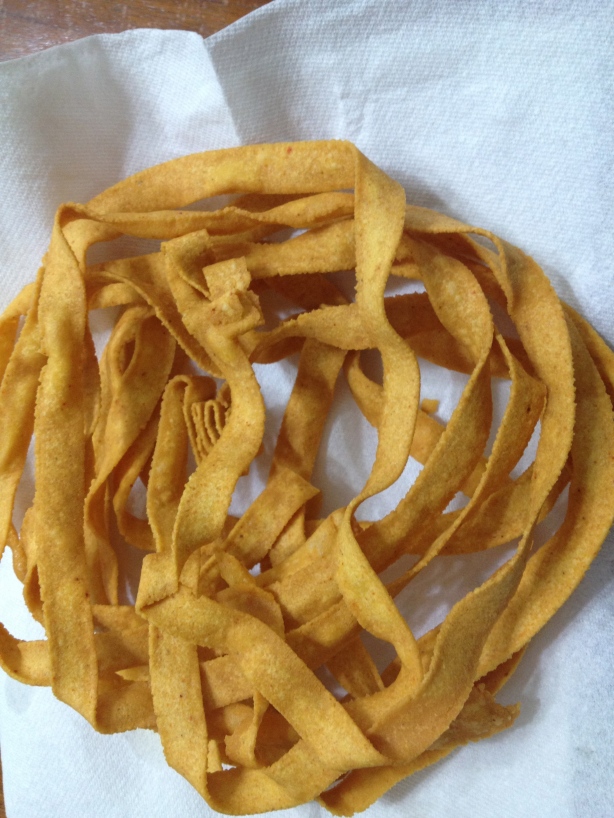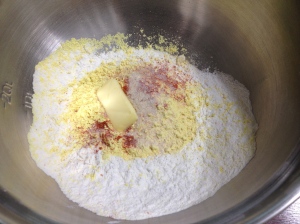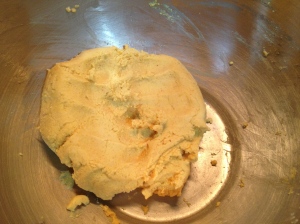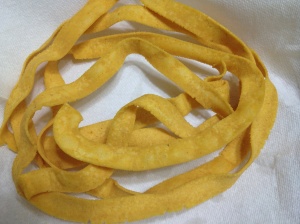
I marvel at the patience and forbearance our parents have had in many aspects of raising us. No, I’m not continuing on with my introspection here, though it’s incredible that it’s taken so many years for this to finally sink in:) I say this as I try to vaguely recreate what my mom (Amma) would have done on this special day for the special and very endearing elephant headed diety – Ganesha.
Growing up Amma was always big on marking every special traditional festival day with just the perfect altar, the best mouth watering delicacies, the finest clothes and the traditional lunch or dinner. I would, of course, enjoy the delicacies and the fineries, but I never really attempted to learn or emulate anything she was doing. I’m not sure if this was part ignorance, rebellion (in my own subtle ways:) or just nonchalance on my part. And the fact that my parents continue to live with us has probably only spoiled me further in that I continue to depend on Amma for marking such special occasions in her own inimitable ways.
Well, this year has been different. Not only have we moved a gazillion miles from the US to Singapore but my parents are making more frequent trips back home to India which only means that I finally have to survive on my own:). I have never been one to do anything elaborate on festival days and a special festival would mean a special song sung to the particular diety or an occasional visit to the temple, if at all. That is, if Amma or my mother-in-law reminded me gently that it was coming up, the week before or many times, the evening before the festival day:).
This year, that’s been different too. It must be the fact (or the perception) that I am still “settling in” and not working (yet:), and that “I have a lot more time on hand to finally make an attempt” – in Amma’s words:). I could go on and on on why I don’t feel that I need to “celebrate festivals” or “why every day is the same and question “why should we pray more on certain days and not others”, blah, blah. See, it is at these times that I shouldn’t try to be too introspective or philosophical any more. Because the truth of the matter is, when I did go the extra mile as I did this year, when I did try to recreate what little Amma used to do to mark this occasion, when I did try to make some of the mouth watering “prasadam” for Ganesha and when I did say that extra prayer this morning, it felt different – in a nice way. There is a vague sense of fulfillment and what’s that elusive word – as Nikhil puts it – “it feels peaceful in my brain”:). There, I said it.
But it is hard work. I made Kozhakattai or Modak (steamed jaggery and savory dumplings) for the first time successfully (the last time I tried, the kozhakattai crumbled and looked like amoeba). I can only say I only scratched the surface of how Amma would have made this day special, and boy, I am beat:) Which brings me to the point about patience and forbearance that our parents had. Here’s the recipe…(adapted from Festival Samaiyal by Viji Varadarajan)
Ingredients: For the dough/dumpling base
Rice – 2 cups ( I used Basmati)
Water – 4 cups
Milk, lukewarm – 1 cup
Salt – a pinch
Sesame Oil – 2 tbsp
Method:
1. Soak the rice in 2 cups hot water for about 20 minutes.
2. Blend the rice to a fine paste while adding little water.

3. Add the milk, salt and oil to this to make a very thin batter.
4. Heat a heavy bottom pan or vessel, add or spray a little oil, and then add this batter to the pan. While keeping the flame on medium, stir continuously for about 5-7 minutes. The batter will start to get thick and then begin to stick to the ladle and roll around it. Remove from fire and empty into a wide dish.
5. Rub your hands with some oil and knead the dough well to make sure there are no lumps and it is smooth to touch. Keep this dough aside covered with a wet cloth or towel.

Sweet jaggery Filling (Thengai Poornam)
Grated coconut – 2 cups
Jaggery or palm sugar – 1 cup
Cardamom powder – 1/2 tsp
Water – 3/4 cup
Method:
1. Melt the jaggery in a heavy saucepan. You may add water in this step to help the melting process but this is optional.
2. Add the grated coconut to the jaggery and begin to stir while keeping the flame at low/medium.
3. Once the water evaporates, lower the heat and add the cardamom powder.
4. Continue stirring until the the mixture becomes sticky and fudge like.
5. Once cooled, make small lime sized balls and keep aside.
Savoury Filling (Uppu Kozhakkattai)
Ingredients:
Urad dal (Black gram) – 3/4 cup
Green chilies – 4
Asafetida – 1/3 tsp
Mustard seeds – 1/4 tsp
Salt – 1/2 tsp
Chopped curry leaves and cilantro (optional) – 1 tsp
Oil – 1 tsp
Method:
1. Soak the urad dal in 2 cups hot water for 20 minutes. Drain the water and blend to a very coarse batter with chilies, asafetida powder and salt.
2. Steam the paste in a dish in the pressure cooker for about 7-10 minutes.
3. Cool and crumble the mixture with your hands or a fork so that it resembles a coarse powder or usuli.
4. Heat oil in a pan, add mustard seeds when hot and when the seeds splutter, add the usuli. and mix. You can also add some finely chopped curry leaves and or cilantro here.
5. Use this filling in the kozhakkattai base for making the savory kozhakkattai.

Assembling the kozhakkattai –
1. Grease your hands with a drop of oil and make lemon sized form balls of the dough. Mould the dough into a boat shape with a little cup in the center. For the savory kozhakkattai you can just make a flat circle with the dough.

2. Add in the sweet filling in the center of the cup and press the edges together until a round cup forms with a little peak.

3. For the savory ones, add the usuli in the flat circle dough and then press the edges together to form an oval shaped crescent.
4. Steam the sweet and savory kozhakkattais in a pressure cooker or an idli cooker or steamer for about 7-10 minutes. You should see tiny beads of water around the kozhakkattais. If they are undercooked, they will be sticky to touch.



0.000000
0.000000



